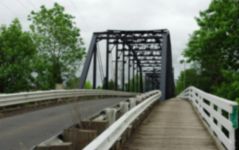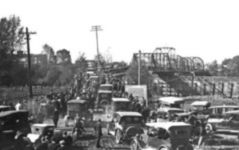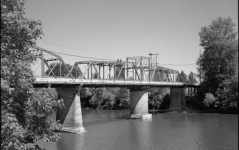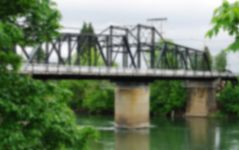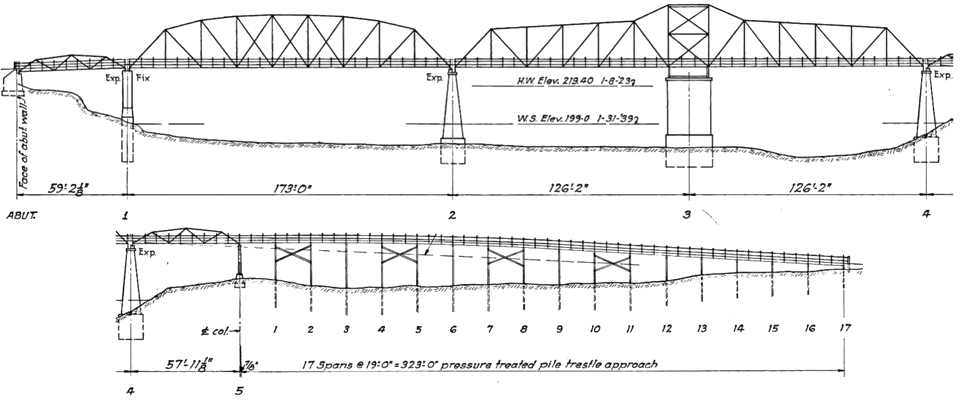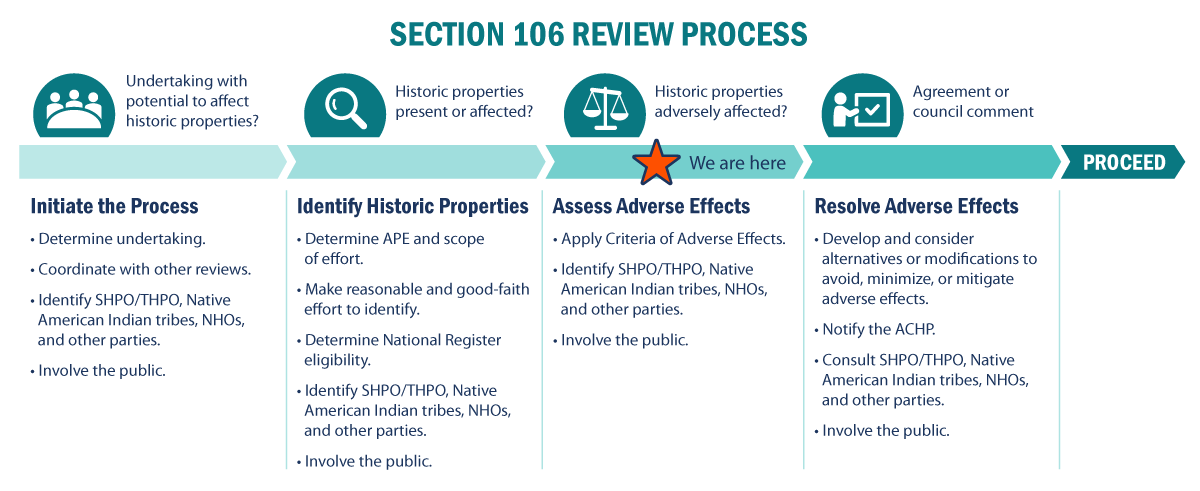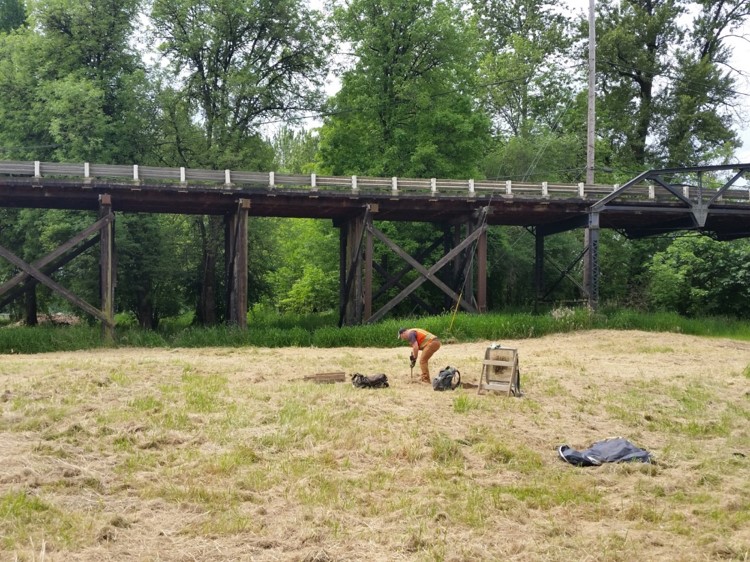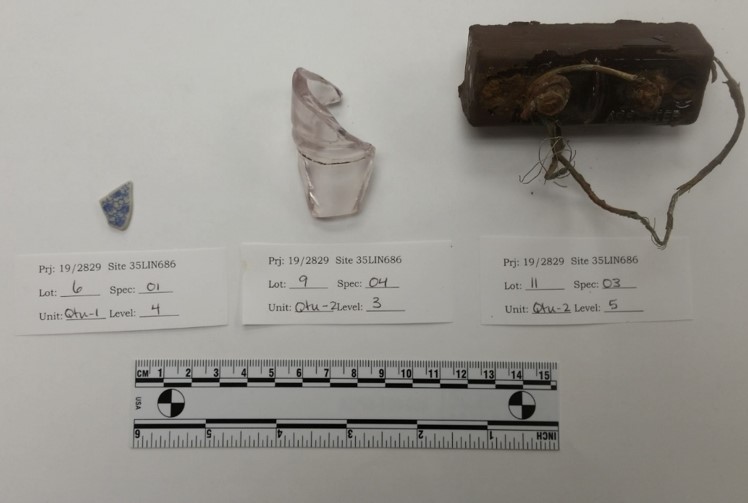Stations
- It’s vulnerable to earthquakes.
- The rails and transitions are below the required standards and raise safety concerns.
- A 1995 evaluation recommended it be replaced by 2005 because of steel fatigue. (It is inspected bi-annually as a safety precaution.)
- Our recent inspection found underwater erosion of the concrete piers and footings.
- In the current condition, vehicle height and weight restrictions are required.
- Updated weight restriction does not allow the crossing of emergency vehicles.
- Adding lanes would compromise the bridge's historic integrity.
- 1979-1983: An Environmental Impact Statement was completed to consider an alternate route for traffic to bypass the central business area of Corvallis.
- 2004: Previous plans to study bridge options were revived.
- 2005: An Environmental Baseline Report was completed to help determine requirements for the new Van Buren Bridge. A Bridge and Roadway Alternatives Report was also completed to study design options for locating a new Van Buren Bridge.
- 2006-2007: Design options included a new bridge parallel to the existing bridge, a curved bridge between the old bridge and the Harrison Street Bridge, and a bypass north to connect with Oregon 99W. No funding was available to replace the bridge, therefore significant work was done to repaint and address other deffered maintenance of the bridge.
- 2008-2009: An Existing Traffic Conditions Report was completed and focused on conducting additional traffic studies.
- 2017: The State Legislature’s passage of House Bill 2017 provided more bridge funding and project planning resumed.
The current project builds on this previous work.
Additional Information
- Project Fact Sheet (PDF, 1.4 MB)
- Van Buren Bridge Repurposing Study (PDF, 18 MB)
Van Buren Bridge Cultural Resources Map
Click and drag to explore the map. Click lines, shapes and icons for more information. Turn layers on and off and browse the list of projects by clicking the ![]() button in the upper left of the map window. (You may need to turn off layers to select other objects underneath.) Map shapes and icons are provided for reference only, precise locations may vary.
button in the upper left of the map window. (You may need to turn off layers to select other objects underneath.) Map shapes and icons are provided for reference only, precise locations may vary.
Historic properties within the project have been researched and identified through field survey and background research.
Any identified adverse effects to historic properties will be avoided or minimized and mitigated where necessary.
The Oregon State Historic Preservation Office, federally-recognized tribes, project consulting parties and the general public will be consulted throughout these efforts.
More information
In June 2019, a Historic Resource Baseline Report was completed that summarizes built environment resources in the APE. In May 2021, an in-depth analysis of resources that were identified in the Baseline Report was completed and documented in the Determinations of Eligibility.
- Learn more about the Historic Resources Baseline Report.
- Learn more about Section 106.
- Learn more about the Determinations of Eligibility (DOE).
The Area of Potential Effect (APE) is the geographic area where the project actions may result in impacts to cultural resources.
SHPO is the State Historic Preservation Office.
THPO is the Tribal Historic Preservation Office.
NHO is the Native Hawaiian Organization.
ACHP is the Advisory Council on Historic Preservation.
To identify eligible historic and archaeological resources, we:
- Researched and evaluated the National Register eligible resources within the Area of Potential Effect (APE), the geographic area where the project may result in impacts to cultural resources.
- Conducted a Baseline Report for resources 45 years or older within the APE.
- Conducted archaeological surveys to investigate for the presence of any previously unidentified archaeological resources.
- Evaluated previous research of above ground buildings. (See below.)
- Examined known archaeological sites including five previously recorded sites, plus Orleans Townsite.
- Van Buren Bridge
- Corvallis Downtown Historic District
- John Beach Barn
- Flomatcher Building
- Verizon Building (303 NW Harrison)
- Van Buren Bridge
- Corvallis Downtown Historic District
- John Beach Barn
- Research to determine the type of archaeological resources that may be encountered.
- Review previously conducted fieldwork to identify locations for study.
- Outreach to consulting parties.
- Conducted exploratory surveys of the project area.
- Monitor geotechnical borings for deeply buried resources.
- Tested and evaluated four sites and Orleans Townsite.
- Four archaeological sites along with the Orleans Townsite were investigated.
- Artifacts mostly include structural debris from late 19th and early 20th century businesses and residences, although a few Native American artifacts are present.
- Some artifacts may be associated with the Orleans Townsite, a town established in 1850 and destroyed during a flood in 1861.
- One of the sites evaluated, an historic refuse scatter, was determined NRHP eligible.
- Mitigation of the adverse effect to the site is required.
The term “effect” is defined under 36 CFR §800.16(i) as an “alteration to the characteristics of historic property qualifying it for inclusion in, or eligibility for the National Register.” The project’s impact on the property’s use, character, location, and setting are considered when determining its effect on the historic property. An effect is considered adverse under 36 CFR §800.5(a)(1) when it will endanger those qualities that make the property eligible for inclusion in the National Register. Adverse effects of a project can be direct or indirect. Typical examples include:
- Physical destruction or damage.
- Alteration inconsistent with the Secretary of the Interior’s Standards for the Treatment of Historic Properties.
- Decommissioning of the property.
- Change in the character of the property’s use or setting.
- Introduction of incompatible visual, atmospheric, or audible elements.
- Neglect and deterioration.
For additional information, visit the Advisory Council on Historic Preservation's webpage on the Section 106 process.
Three historic resources that are potentially eligible for listing in the National Register of Historic Places may be impacted by the project.
- The Corvallis Downtown Historic District comprises the historic commercial core of Corvallis and includes primarily retail stores and offices located along 1st through 6th Streets, between Van Buren Avenue and Washington Avenue, with significant historic resources dating from circa 1856 to 1960 that are related to the town's first one hundred years of commercial and transportation development. The Van Buren Bridge and archaeology site 35LIN842 are both contributing resources to the historic district.
- The Van Buren Bridge crosses the Willamette River on OR 34 between Benton and Linn Counties in Corvallis. The bridge is individually eligible for listing in the National Register of Historic Places and is a contributing resource to the Corvallis Downtown Historic District.
- The John Beach Barn was also identified as a potentially eligible resource for listing in the National Register of Historic Places. However, the resource will not be impacted by the proposed project actions and was not considered in the evaluation of effects process.
One archaeological resource identified is NRHP-eligible and will be impacted by the project.
- Archaeological site 35LIN842, a contributing resource to the Corvallis Downtown Historic District, has been identified as having the potential to answer important questions about the development of Corvallis. The site is a 1910s subsurface debris deposit. Site components include a historic-period artifact scatter, eight wood pilings, broken concrete, and metal cable. The site was created due to residents of Corvallis being instructed to dispose of refuse there during the 1910s.
We are currently evaluating the potential alternatives to avoid adverse effects to the identified significant resources.
We have prepared draft Section 106 Finding of Effect documents assessing the adverse effects. We are currently working with our Section 106 consulting parties to finalize the documents and share for public review.
The documents will be posted to the project webpage; be sure you are signed up to receive project updates and notices.
We will continue consultations to mitigate the proposed adverse effects as part of the Section 106 process. This summer, we will conduct additional public outreach to gather input as we develop measures to mitigate for adverse effects.
Complete the comment form below.
Visit the project website for more information.
Sign up for email updates.
Contact ODOT:
For questions about Historic Resources, please contact Hayli Reff, and for questions about Archeological Resources, contact Tobin Bottman.
For general questions and comments, please contact Savannah Crawford.

